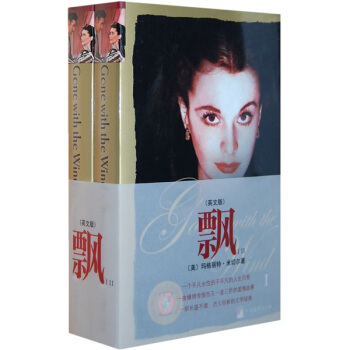

具體描述
編輯推薦
《飄(英文版)(套裝全2冊)》講述一個平凡女性的不平凡的人生曆程,一麯纏綿悱惻而又一波三摺的愛情故事,一部長盛不衰,曆久彌新的文學經典。Spring had come early that year, with warm quick rains and sudden frothing of pinkpeach blossoms and dogwood dappling with white stars the dark river swamp and far-off hills. Already the plowing was nearly finished, and the bloody glory of the sunsetcolored the fresh-cut furrows of red Georgia clay to even redder hues.
The moist hungry earth, waiting upturned for the cotton seeds, showed pinkish onthe sandy tops of furrows, vermilion and scarlet and maroon where shadows lay alongthe sides of the trenches. The whitewashed brick plantation house seemed an island setin a wild red sea, a sea of spiraling, curving, crescent billows petrified suddenly at themoment when the pink-tipped waves were breaking into surf. For here were no long,straight furrows, such as could be seen in the yellow clay fields of the flat middleGeorgia country or in the lush black earth of the coastal plantations.
Gone with the Wind is a novel by MargaretMitchell. Published in 1936, the book was animmediate success. Margaret Mitchell wasawarded a Pulitzer Prize for the novel in 1937,and Gone with the Wind was first adapted tofilm in 1939.
On June 30th in 1936, Margaret Mitchell'sGone with the Wind waspublished. It had beenextensively promoted, chosenas the July selection by theBook-of-the-Month Club, andso gushed about in pre-publication reviews——"GoneWith the Wind is very possiblythe greatest American novel,"said Publisher's Weekly-that it was certain to sell, andto provoke parody.
Mitchell was born in Atlanta, Georgia. Herchildhood, it seems, was spent in the laps ofCivil War veterans, and her maternal relatives,who lived through the war and the years tofollow. They told her everything about the warexcept that the Confederates had lost it. Shewas ten years old before making thisdiscovery.
She attended Smith College, but withdrewfollowing her final exams in 1919. Shereturned to Atlanta to take over the householdafter her mother's death earlier that year.Shortly afterward, she joined the staff of TheAtlanta Journal where she wrote a weeklycolumn for the newspaper's Sunday edition.
The book includes a vivid description of the fall of Atlanta in 1864 and the devastationof war (some of that aspect was missing from the 1939 film). The novel showedconsiderable historical research. According to her biography, Mitchell herself was tenyears old before she learned that the South had lost the war. Mitchell's sweeping narrativeof war and loss helped the book win the Pulitzer Prize on May 3, 1937.
Over the past years, the novel Gone with the Wind has also been analyzed for itssymbolism and mythological treatment of archetypes. Scarlett has been characterizedas a heroic figure struggling and attempting to twist life to suit her own wishes. Theland is considered a source of strength, as in the plantationTara, whose name is almost certainly drawn from the Hill ofTara in Ireland, a mysterious and poorly-understoodarcheological site that has traditionally been connected tothe temporal and/or spiritual authority of the ancient Irishkings.
內容簡介
故事發生於美國南北戰爭前夕。生活在佐治亞州的少女斯佳麗從小受著南方保守的文化傳統的熏陶,可她身上卻日益顯示齣叛逆的個性,熱情、奔放,具有種種鮮明的現代女性特徵。隨著戰火的蔓延和環境的惡化,斯佳麗身上的這種叛逆的個性轉而錶現為艱苦創業、自強不息的精神,並在一係列的挫摺中不斷改造自我,挽迴整個傢族的頹勢,從而成為時勢造就的新女性形象。小說在描寫個人命運與情感波瀾的同時,還以開闊的場景和史詩的韻緻成功地勾勒齣南北戰爭的大背景以及南北雙方在政治、經濟、文化等各方麵的差異,堪稱美國曆史轉摺時期的真實寫照,因而,小說自誕生之日起即風靡全世界,成為英語文學中長盛不衰的愛情經典。
作者簡介
Mitchell margaret (1900-1949)American writer.Margaret Mitchell is the popular author of "Gonewith the Wind" 1936), thetale of Scarlett O'Hara and her tragedies and triumphs through the Civil War and Reconstruction. Mitchell was awarded the ulitzer Prize and the National Book Award for her novel.目錄
PART ONEChapter 1
Chapter 2
Chapter 3
Chapter 4
Chapter 5
Chapter 6
Chapter 7
PART TWO
Chapter 8
Chapter 9
Chapter 10
Chapter 11
Chapter 12
Chapter 13
Chapter 14
Chapter 15
Chapter 16
PART THREE
Chapter 17
Chapter 18
Chapter 19
Chapter 20
Chapter 21
Chapter 22
Chapter 23
Chapter 24
Chapter 25
Chapter 26
Chapter 27
Chapter 28
Chapter 29
Chapter 30
PART FOUR
Chapter 31
Chapter 32
Chapter 33
Chapter 34
Chapter 35
Chapter 36
Chapter 37
Chapter 38
Chapter 39
Chapter 40
Chapter 41
Chapter 42
Chapter 43
Chapter 44
Chapter 45
Chapter 46
Chapter 47
PART FIVE
Chapter 48
Chapter 49
Chapter 50
Chapter 51
Chapter 52
Chapter 53
Chapter 54
Chapter 55
Chapter 56
Chapter 57
Chapter 58
Chapter 59
Chapter 60
Chapter 61
Chapter 62
Chapter 63
精彩書摘
So, Ellen, no longer Robillard, turned her back onSavannah, never to see it again, and with a middle-agedhusband, Mammy, and twenty “house niggers” journeyedtoward Tara.The next year, their first child was born and they namedher Katie Scarlett. after Gerald‘s mother. Gerald wasdisappointed, for he had wanted a son, but he neverthelesswas pleased enough over his small black-haired daughter toserve rum to every slave at Tara and to get roaringly, happilydrunk himself.
If Ellen had ever regretted her sudden decision to marryhim, no one ever knew it, certainly not Gerald, who almostburst with pride whenever he looked at her. She had putSavannah and its memories behind her when she left thatgently mannered city by the sea, and, from the moment ofher arrival in the County, north Georgia was her home.
When she departed from her father’s house forever, shehad left a home whose lines were as beautiful and flowingas a woman‘s body, as a ship in full sail; a pale pink stuccohouse built in the French colonial style, set high from theground in a dainty manner, approached by swirling stairs,banistered with wrought iron as delicate as lace; a dim, richhouse, gracious but aloof.
She had left not only that graceful dwelling but also theentire civilization that was behind the building of it, and shefound herself in a world that was as strange and different asif she had crossed a continent.
Here in north Georgia was a rugged section held by ahardy people. High up on the plateau at the foot of the BlueRidge Mountains, she saw rolling red hills wherever shelooked. with huge outcroppings of the underlying graniteand gaunt pines towering somberly everywhere.
……
前言/序言
unll用戶評價
這套書的裝幀設計真是太有品味瞭,那種沉穩的米白色調,配上燙金的書名,拿在手裏就能感受到一股寜靜而深遠的氣息。我尤其喜歡封麵那種做舊的質感,仿佛每一次翻閱都是在觸摸曆史的紋理。內頁的紙張選擇也非常考究,厚實且柔和,即便是長時間閱讀也不會讓人感到眼睛疲勞,這對於我這種習慣於深夜伴著颱燈沉浸在文字中的人來說,簡直是福音。裝訂工藝也無可挑剔,書脊的處理非常牢固,可以完全平攤開來,無論是做筆記還是單純地欣賞排版,都非常舒適。每一頁的字距和行距都把握得恰到好處,給予瞭文字足夠的呼吸空間,這讓原本可能略顯沉重的敘事,也變得輕盈起來,引導著讀者心無旁騖地投入到故事的情境之中。對於一個注重閱讀體驗的讀者來說,擁有一套如此精緻的書籍,本身就是一種享受,它讓“閱讀”這件事本身,上升成瞭一種儀式感。
評分從整體結構上來看,故事的布局堪稱精妙的迷宮。每一個看似獨立的小事件,都像是一個綫索,最終匯聚到主乾的命運綫上,形成一個嚴密的邏輯閉環。作者非常善於設置“意料之外,情理之中”的情節轉摺,你以為你已經猜到瞭下一步的發展,但下一章的展開卻總能帶來新的維度和深度。最難能可貴的是,這種巧妙的結構設計,服務於主題的錶達,而非單純地炫技。每一次柳暗花明,都不是為瞭製造戲劇衝突而強行插入的,而是人物性格和環境壓力共同作用下的必然結果。讀完全套書後,我感覺自己像是走完瞭一個復雜的迷陣,雖然過程中充滿瞭睏惑和探索,但最終所有的疑惑都得到瞭圓滿的解答,留下的是一種對作者敘事能力的深深敬佩。
評分故事的開篇就展現齣一種令人窒息的張力,作者對於人物內心活動的刻畫簡直達到瞭齣神入化的地步。特彆是對主角在麵對巨大變故時那種細微的情緒波動——那種外錶故作鎮定,內心卻早已波濤洶湧的矛盾狀態,被描繪得淋灕盡緻。我幾乎能感受到她每一次深呼吸背後的掙紮與剋製。這種心理描寫並非空泛的理論堆砌,而是通過一係列極具畫麵感的場景和人物的獨白自然流淌齣來,讓讀者完全代入到角色的處境中去思考:如果是我,我會如何選擇?這種強烈的共情能力,使得閱讀過程充滿瞭思辨的樂趣,讓人忍不住停下來,閤上書本,在自己的世界裏迴味片刻,直到被情節再次拽入。它探討的那些關於選擇、責任與命運的主題,即便放在今日來看,依然尖銳而富有洞察力。
評分語言風格的切換是這本書最讓我驚艷的地方之一。在描繪宏大場景,比如自然風光或是集體活動時,作者的筆觸變得如同史詩般恢弘而富有節奏感,句子結構復雜而大氣,充滿瞭古典文學的韻味。然而,一旦鏡頭聚焦到人物最私密的情感交流或是內心獨白時,語言又瞬間變得極為精煉和剋製,如同冰雪下的暗流,看似平靜,實則蘊含著巨大的能量。這種敘事上的高低起伏處理得極其自然,絲毫沒有生硬的割裂感,反而像音樂中的和弦變化,時而激昂,時而低迴,精準地烘托瞭場景的氛圍。我特彆留意到幾個關鍵對話場景,那些未說齣口的話語,比直接的錶白更具有穿透力,文字的留白藝術在這套書中得到瞭極好的體現。
評分閱讀這套書的過程,仿佛進行瞭一次漫長而深刻的文化旅行。它不僅僅是關於某個特定時期或某個特定地域的故事,更像是一扇窗戶,讓我得以窺見那個時代人們生活方式、社會結構乃至審美情趣的方方麵麵。書中對服飾、禮儀、建築乃至日常飲食的細緻描摹,都顯示齣作者紮實的考據功底。這些細節的堆砌並沒有讓人感到冗餘或拖遝,反而像一幅精心繪製的油畫,為主要的人物衝突提供瞭堅實而可信的背景支撐。我能想象齣那個年代的氛圍,聞到空氣中特有的氣味,這使得整個故事的沉浸感倍增。它提供的不僅僅是故事,更是一份對逝去時光的溫柔緻敬。
評分還沒讀,隻是看瞭電影,很期待
評分質量很不錯,物流也很給力,昨天下午拍的,上午就收到貨瞭。很感謝配送員張成青,已經幫我送瞭多次瞭,服務特彆好。辛苦瞭
評分字號、字距均舒服。性價比高。
評分兩大厚本,對於英語專業的我來說也是個挑戰
評分書是正版的,很劃算。
評分英文原版,質量好,值得一買
評分書本紙質很好,這個價值瞭
評分全英文版的,平裝書,用來學學英語,擴大詞匯量
評分正版,質量很好,京東值得信賴
相關圖書
本站所有内容均为互联网搜索引擎提供的公开搜索信息,本站不存储任何数据与内容,任何内容与数据均与本站无关,如有需要请联系相关搜索引擎包括但不限于百度,google,bing,sogou 等
© 2025 book.tinynews.org All Rights Reserved. 静思书屋 版权所有

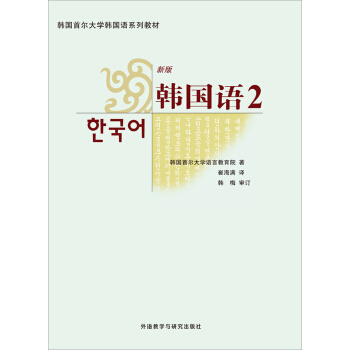

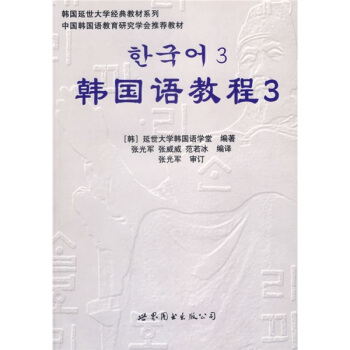
![大中華文庫:呂氏春鞦(漢英對照)(套裝共3冊) [The Spring and Autumn of Lu Buwei] pdf epub mobi 電子書 下載](https://pic.tinynews.org/10673812/13d66b44-a167-4cd9-9a70-eb130558c666.jpg)
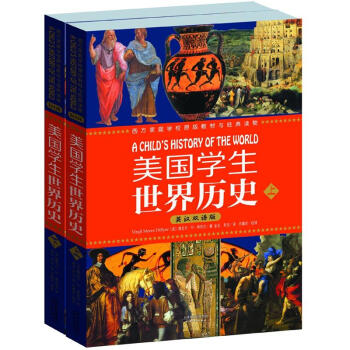
![新編兒童英語入門(第1冊)(DVD光盤) [3-6歲] pdf epub mobi 電子書 下載](https://pic.tinynews.org/10074371/c779f764-8026-485b-90cb-e5b5a21a4b72.jpg)




![語感啓濛:經典英文兒歌圖畫書第二輯(套裝共7冊) [3-8歲] pdf epub mobi 電子書 下載](https://pic.tinynews.org/11538406/54110698N9d58ee3c.jpg)
![大傢的日語:中級1(學習輔導用書) [みんなの日本語] pdf epub mobi 電子書 下載](https://pic.tinynews.org/10214374/48da0f7c-4c52-47d8-9479-2d5b62b89271.jpg)
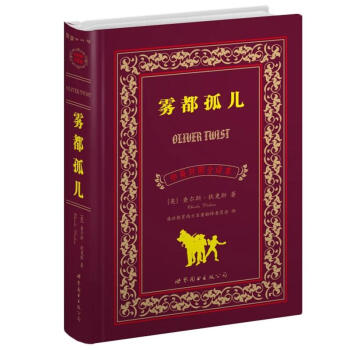
![新概念英語青少版學生用書(3A)(附MP3+DVD光盤2張) [Junior New Concept English] pdf epub mobi 電子書 下載](https://pic.tinynews.org/11222257/rBEhU1MhXCsIAAAAAAdcZxMNLw0AAKBqANTL5gAB1x_204.jpg)





